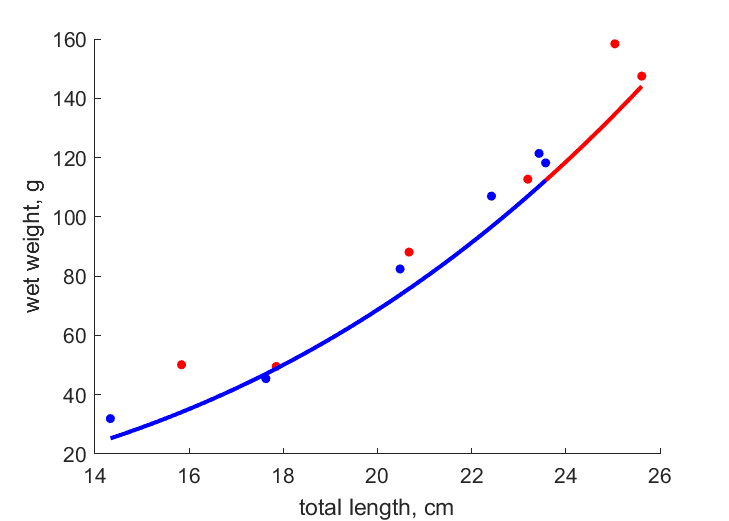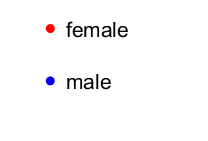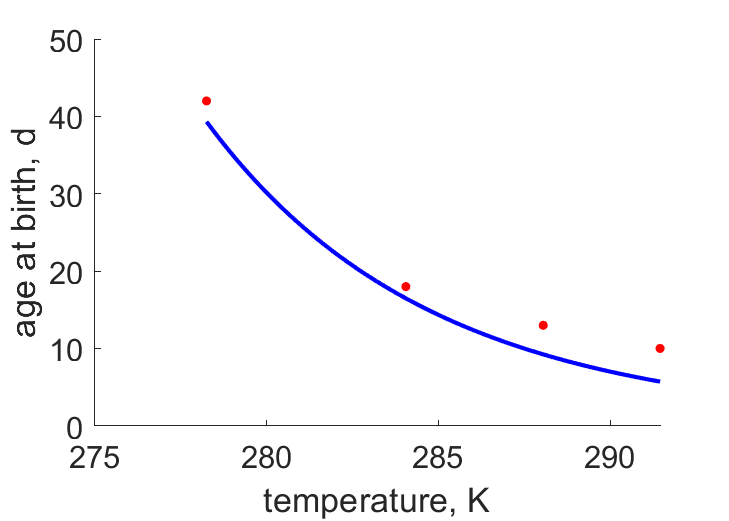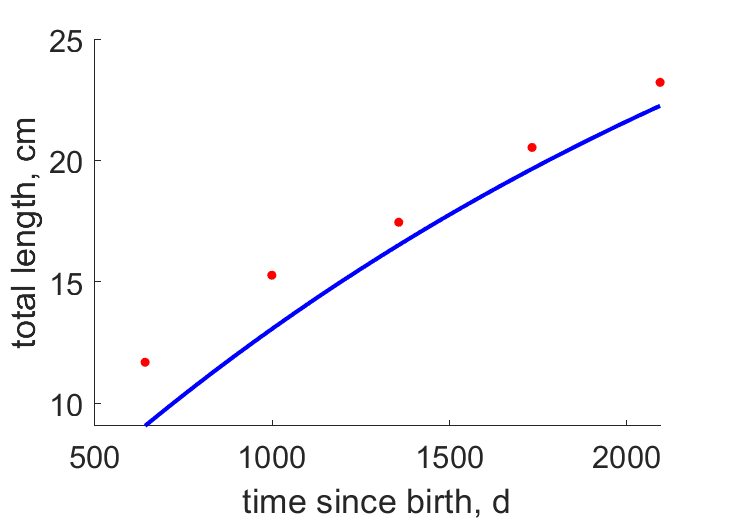Predictions & Data for this entry
| Model: std | climate: MC | migrate: Ma | phylum: |
| COMPLETE = 2.5 | ecozone: MPN, MAN | food: biPz, biCi | class: |
| MRE = 0.089 | habitat: 0jFr, jiMcp | gender: D | order: |
| SMSE = 0.013 | embryo: Fs, Fg, Fh | reprod: O | family: |
Zero-variate data
| Data | Observed | Predicted | (RE) | Unit | Description | Reference |
|---|---|---|---|---|---|---|
| ab | 27 | 29.46 | (0.09114) | d | age at birth | QuigIgoe2004 |
| ap | 730 | 785.5 | (0.07597) | d | age at puberty | gma |
| am | 2555 | 2555 | (7.038e-05) | d | life span | fishbase |
| Lb | 0.26 | 0.2929 | (0.1267) | cm | total length at birth | gma |
| Lp | 19.5 | 17.63 | (0.0961) | cm | total length at puberty | fishbase |
| Li | 35.6 | 38.95 | (0.09413) | cm | ultimate total length | fishbase |
| Wwb | 0.00022 | 0.0002156 | (0.01997) | g | wet weight birth | fishbase |
| Ri | 123.3 | 123.5 | (0.001354) | #/d | maximum reprod rate | gma |
Uni- and bivariate data
| Data | Figure | Independent variable | Dependent variable | (RE) | Reference |
|---|---|---|---|---|---|
| LW_f |   | total length | wet weight | (0.1023) | MaitLyle2010 |
| LW_m |   | total length | wet weight | (0.08753) | MaitLyle2010 |
| LW |  | total length | wet weight | (0.226) | JoneMcCa2013 |
| Tab |  | temperature | age at birth | (0.1475) | JoneMcCa2013 |
| tL |  | time since birth | total length | (0.08658) | QuigIgoe2004 |
Pseudo-data at Tref = 20°C
| Data | Generalised animal | Osmerus mordax | Unit | Description |
|---|---|---|---|---|
| v | 0.02 | 0.02884 | cm/d | energy conductance |
| p_M | 18 | 60.84 | J/d.cm^3 | vol-spec som maint |
| k_J | 0.002 | 0.002 | 1/d | maturity maint rate coefficient |
| k | 0.3 | 0.1716 | - | maintenance ratio |
| kap | 0.8 | 0.9522 | - | allocation fraction to soma |
| kap_G | 0.8 | 0.8015 | - | growth efficiency |
| kap_R | 0.95 | 0.95 | - | reproduction efficiency |
Discussion
- Bas Kooijman: O. mordax and O. eperlanus are here treated as sufficiently similar in view of the large effect of varying environmental conditions (temp, salinity, food)
Facts
- Spawning is initiated at temperature 4-7C (Ref: QuigIgoe2004)
- Landlocked populations and large parts of anadromous populations usually reproduce only once in their life. Juveniles prefer fresh or brackish water until they mature. (Ref: redlist)
Bibliography